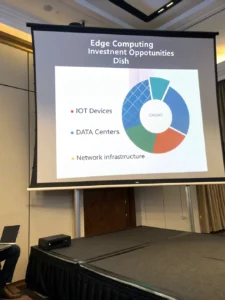Protect Your Business: A Practical Guide to Using Machine Learning for Fraud Detection
The AI-Powered Shield: How Machine Learning is Revolutionizing Fraud Detection
The digital landscape thrives on trust, yet it’s constantly under siege by fraudsters. From financial scams to identity theft, the cost of fraud is staggering – hitting businesses and consumers alike. But there's a powerful new weapon in the fight: using machine learning for fraud detection. This isn’t just about reactive measures anymore; it’s about proactive forecasting and dynamic adaptation to ever-evolving threats. This blog post will explore how AI, particularly machine learning, is reshaping fraud prevention in today's complex world, covering applications across crypto markets, stock investments, and beyond, with a look at the future of automated security.

The Escalating Threat Landscape & The Need for Advanced Protection
Fraud isn't a static problem; it’s a relentless arms race. Traditional rule-based systems, while helpful, struggle to keep pace with sophisticated criminal tactics. Fraudsters leverage data breaches, social engineering, and increasingly complex techniques to exploit vulnerabilities. They are adept at adapting, making static rules quickly obsolete. This is where the adaptability of machine learning truly shines. The rise of cryptocurrencies and decentralized finance (DeFi) has presented new complexities, requiring innovative approaches to fraud prevention. Similarly, the increasing integration of AI in investment strategies opens up new avenues for manipulation and illicit gains.
Machine Learning: The Core of Next-Gen Fraud Detection
Machine learning (ML) algorithms learn from data without explicit programming. This allows them to identify patterns and anomalies that humans or traditional systems would miss. Several ML techniques are particularly effective in fraud detection:
- Anomaly Detection: ML models learn the "normal" behavior and flag deviations as potential fraud. For example, unusual transaction volumes, IP addresses, or user activity.
- Supervised Learning: These algorithms are trained on labeled data (fraudulent vs. legitimate transactions) to predict future fraud. Common algorithms include logistic regression, support vector machines (SVMs), and decision trees.
- Unsupervised Learning: Ideal for identifying previously unknown fraud patterns. Techniques like clustering and dimensionality reduction can uncover hidden relationships in data.
- Deep Learning: A subset of ML, utilizing neural networks with multiple layers to analyze complex data like images, text, and time-series. Deep learning excels at identifying intricate, non-linear patterns indicative of fraud.
AI & Machine Learning in Specific Areas: A Deeper Dive
Let’s explore how this powerful technology is being applied across various sectors:
Crypto Markets: Safeguarding Digital Assets
The volatile world of cryptocurrency is a prime target for fraudsters. Using machine learning for fraud detection is crucial here due to the anonymity and borderless nature of transactions. ML algorithms analyze on-chain data (transaction history, wallet activity) and off-chain data (social media sentiment, news articles) to identify suspicious activities like:
- Wash Trading: Artificial inflation of trading volume.
- Pump and Dump Schemes: Artificially inflating the price of an asset and then selling it for a profit.
- Smart Contract Vulnerabilities: Identifying and mitigating exploits in DeFi smart contracts.
- Money Laundering: Detecting patterns indicative of illicit funds being disguised as legitimate transactions.
using machine learning for fraud detection enables real-time monitoring and alerts, helping crypto exchanges and users protect their assets.
Stock Investments: Preventing Market Manipulation
The stock market is another area vulnerable to fraudulent activities. ML algorithms can detect:
- Insider Trading: Unlawful trading based on non-public information.
- Spoofing: Placing orders with the intention of canceling them before execution to manipulate market prices.
- Layering: A technique used to obscure the origin of funds during money laundering.
- Market Rigging: Detecting manipulated pricing actions.
By analyzing trading patterns, news sentiment, and social media data, ML models can flag suspicious activities and help maintain market integrity. Enhanced fraud prevention in stock markets can boost investor confidence and stability.
Alternative Investments: Ensuring Trust & Security
The alternative investment space, encompassing private equity, hedge funds, and real estate, presents unique opportunities but also increased risks. ML can be applied to:
- Due Diligence: Automating the analysis of vast amounts of data to assess the legitimacy and financial health of potential investments.
Building a Robust Machine Learning-Powered Fraud Detection System
Implementing an effective ML-based fraud detection system requires a multi-faceted approach:
- Data Collection & Preparation: Gather comprehensive data from various sources and ensure it's clean, accurate, and properly formatted.
- Algorithm Selection: Choose the right ML algorithm(s) based on the specific type of fraud you're trying to detect and the available data.
- Model Training & Evaluation: Train the model on historical data and continuously evaluate its performance using metrics like precision, recall, and F1-score.
- Real-Time Monitoring & Alerting: Deploy the model in a real-time environment and set up alerts for suspicious activities.
- Explainable AI (XAI): Implement techniques to understand why the model flagged a particular transaction as fraudulent. This increases trust and facilitates investigation.
| Area | Fraud Type | ML Application | Benefit |
|---|---|---|---|
| Cryptocurrency | Wash Trading | Anomaly Detection, Clustering | Reduced market manipulation, improved asset security |
| Stock Market | Insider Trading | Supervised Learning, Time Series Analysis | Enhanced market integrity, investor confidence |
| Alternative Investments | Misrepresentation of Financial Data | Natural Language Processing (NLP), Data Validation | Improved due diligence, reduced investment risk |
The Future of Fraud Detection: Automation & Adaptive Systems
The future of fraud detection lies in fully automated, adaptive systems. As AI agents become more sophisticated, they will be able to autonomously investigate suspicious activities, escalate alerts to human analysts when necessary, and even proactively adjust security measures to counter emerging threats. This includes integrating AI agents with blockchain technology to create immutable audit trails and enhance transparency. This ongoing evolution of using machine learning for fraud detection ensures a constant head start in the battle against fraudsters.
Ready to Fortify Your Defenses?
The rise of machine learning offers a powerful pathway to combatting fraud and creating a more secure digital world. Investing in these technologies is no longer a luxury; it's a necessity.
What are your thoughts on the future of fraud detection? Share your comments and experiences below! You can also learn more about fraud prevention strategies here . Don’t forget to subscribe to our newsletter for the latest insights into technology and its impact on business.
Share this content:














Post Comment